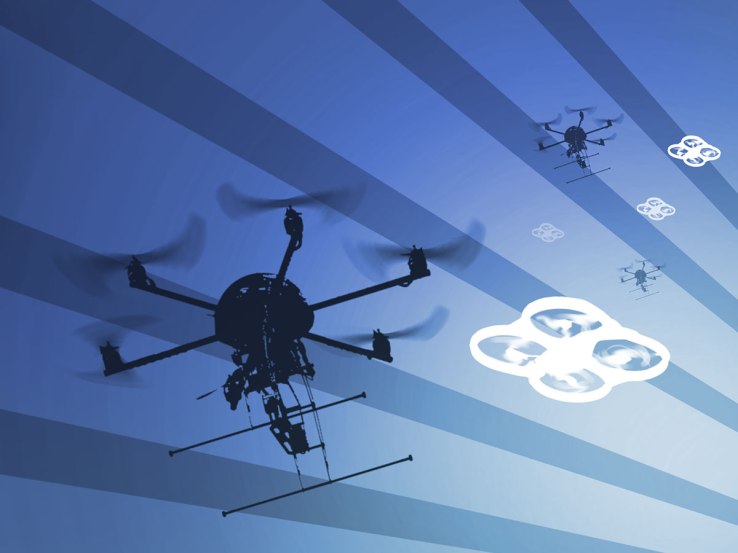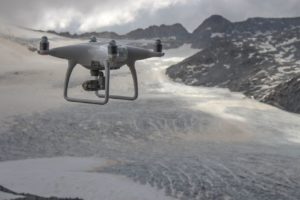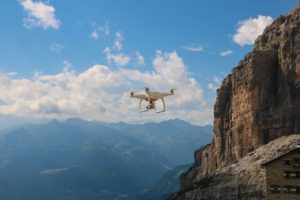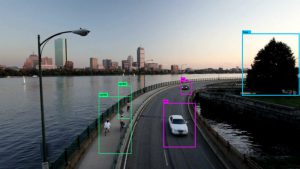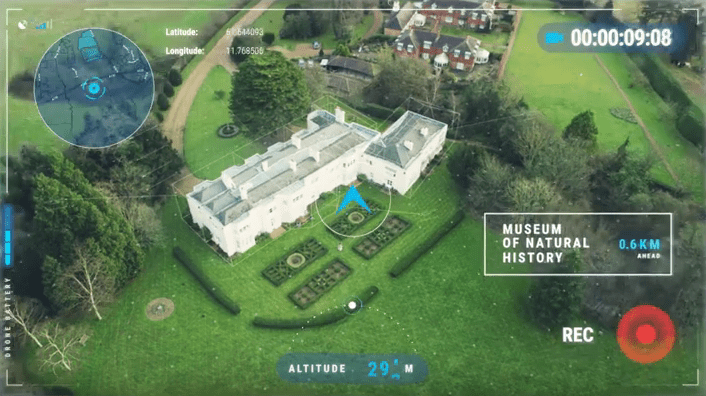Are drones actually a sector or just another layer in the enterprise SaaS stack?
 Monday, September 19, 2016 at 09:44AM
Monday, September 19, 2016 at 09:44AM
The world is abuzz — the past several years have been an exciting time for drones. From videos of drones flying cool missions inside R&D labs to marketing shots like Amazon’s Prime Air, drones have gained the attention of consumers, enterprises and governments.
Their ability to shoot remarkable photography and capture data, and potentially violate privacy and property rights, has led to a flurry of opinions, regulations and oversight. As a result, the landscape has become very cloudy, and we are increasingly asking ourselves if drones are actually a “sector” or yet another layer in the Enterprise SaaS stack?
Hardware and software services have dominated drone investing to date — AngelList cites $1.9 billion. Infrastructure technology and investment have lagged, yet will be essential to support more advanced service providers and to enable true autonomous delivery over longer ranges to the consumer. This is creating a refreshed demand on the innovator side as early entrepreneurs (appropriately) jumped straight to providing enterprise and consumer solutions as the industry exploded.
This, then, left a gap on the front end of the technology innovation curve that we believe now requires a Drone 2.0 refresh — technology building that will continue to support the key solution providers in expanding areas and thus perpetuate the cycle. We are seeing this with emerging enabling technology companies such as Iris Automation, PreNav and Dronesmith, among others, and believe there is room to run. Technical solutions around fleet management, smart routing, sensors and other technology aspects of the flying robots will take center stage again.
To date, the majority of enterprise drone investment opportunities have been focused around a key solution provider. These opportunities often look like consulting practices that leverage a drone to sell a specific service to an enterprise, and are meaningful solutions for many industries, including construction, mining, insurance, forestry, police and government, among others.
Indeed, each business has a viable place in both the drone “stack” and the targeted business vertical. However, the landscape is becoming increasingly fragmented and crowded, and thus difficult to see where outsized value lies for investors in order to achieve venture scale returns.
As such, we assess the drone sector through the lens of a hub and spoke model. At the center is the key solution provider, whose size is variable due to various factors. Many of the supporting functions are outsourced to vertical specialists, and connected (and disconnected) to each other at various times… akin to a living ecosystem.
Enterprise successes — the stack and platform effects
The enterprise successes so far have largely benefited from first-mover advantage, and now face increasing competition from new entrants providing incrementally better solutions at slightly lower prices. We expect that solution providers will now defend their early customers through expanding their value propositions and outsourcing non-critical drone functions, including hardware, to the lowest bidder.
Technologies or business models need a place in the stack. Hardware and software startups have grabbed market share as the drone stack has emerged. It is important to note, as certain players broaden their reach up and down the drone stack, a true technological or business breakthrough must provide a step-function improvement over the status quo. An increasing number of these solutions are being absorbed by adjacent players, as developing it themselves is trivial. Deeper tech is harder to plug-and-play, due to the tight integration required, than the component companies will indicate to a prospective investor.
Platform effect. Not only must a solution provider provide a core solution or service, it must solidify its place in the drone tech stack. This requires other technology (hardware, middleware and software providers) to build on all sides of the solution, and a structure where each additional client brings more value to the platform.
Businesses that truly enable delivery or sharpen data collection and sensing will win mindshare.
For example, Dronesmith’s sensor management platform also allows for developers to continually develop and deploy sensing applications useful to customers. Skyward has become a resource for enterprises and service contractors to manage and expand their drone operations. Iris Automation, Skydio and others are tackling the biggest challenge facing the industrial drone industry: autonomous flight beyond the line of sight. It is an industry-wide belief that industrial drones cannot take off unless they become truly autonomous, requiring situational awareness and collision avoidance technology, the latter of which Iris offers.
As the industry evolves, the key solution providers holding technological and business advantage will succeed, especially those showing platform effects. They will continually strengthen their core position and outsource the commoditized aspects of drone technology (hardware) or business (drone connectivity). Skycatch built out many of these parts as the industry sprouted, and is now servicing the largest elements of the hub as the industry has matured around industrial applications. In the future, they will use multiple vendors to support their customers’ use cases.
Applications of the hub and spoke
The workplace is clearly evolving as drones fly into the mainstream and onto the job site. Humans are pushed further up the knowledge economy chain, making our time more efficient and lives safer. We are seeing the biggest potential impacts in mining exploration (dropping prices by 10x), agricultural surveying (increasing crop yield by 40 percent-plus), geographical mapping, building and insurance inspection, package delivery, search and rescue efforts and forestry inspection. The effectiveness of drones in these industries establishes their placement in the stack and promotes network effects and technology innovation.
Drones hold promise to be a truly enabling technology supporting a variety of crucial global industries.
Businesses that truly enable delivery or sharpen data collection and sensing will win mindshare and investment as industry players increasingly include them in budgets and workflows. PreNav is addressing fundamental changes in localization and computer vision. Zipline and Vayu are delivering on the promise of drones in rural areas. Infrastructure companies will also emerge in the next wave, enabling constant connectivity, sense and avoid or routed delivery. Marketplaces around contract work, images or other data will also expand the reach of this enabling technology.
Conclusion
Drones hold promise to be a truly enabling technology supporting a variety of crucial global industries. The drone-first solutions to problems both known and to be discovered are foundationally solid, efficient and effective. The supporting web of hardware, middleware and software is now substantially robust enough to provide significant value to certain enterprises.
by Michael Berolzheimer (@berolz), Garrett Goldberg (@GarrettGoldberg)
